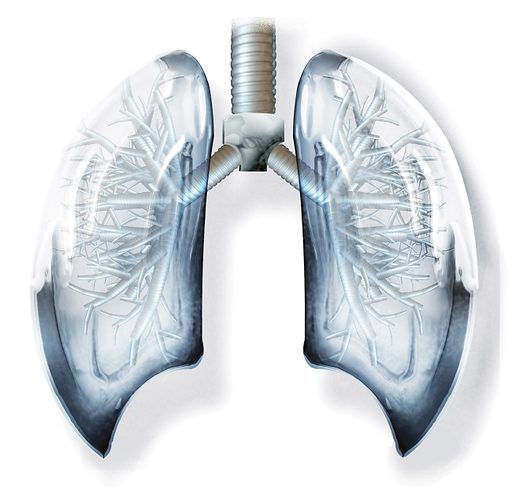Serplulimab Yields Sustained OS/PFS Benefits in Extensive-Stage SCLC
Biomarker analyses indicate the predictive potential of a 15-protein signature related to the efficacy of serplulimab plus chemotherapy in ES-SCLC.
"In this updated analysis, first-line treatment with serplulimab plus chemotherapy showed sustained clinical benefit over placebo plus chemotherapy, supporting serplulimab plus chemotherapy as a first-line treatment in ES-SCLC,” according to lead study author Ying Cheng, MD.

Combining serplulimab (Hetronifly) with chemotherapy as frontline treatment conferred sustained overall survival (OS) and progression-free survival (PFS) benefits vs placebo plus chemotherapy among patients with extensive-stage small cell lung cancer (ES-SCLC), according to updated findings from the phase 3 ASTRUM-005 trial (NCT04063163) published in Cancer Communications.1
Data showed a median OS of 15.8 months (95% CI, 14.1-17.6) with serplulimab/chemotherapy vs 11.1 months (95% CI, 10.0-12.4) with placebo/chemotherapy (HR, 0.62; 95% CI, 0.50-0.76; P < .001). Additionally, the estimated 12-month OS rates were 62.5% (95% CI, 57.3%-67.2%) and 45.6% (95% CI, 38.3%-52.6%) in each respective arm and the estimated 24-month rates were 31.7% (95% CI, 25.6%-37.9%) and 18.7% (95% CI, 12.5%-25.9%).
The serplulimab combination produced a median PFS of 5.8 months (95% CI, 5.6-6.9) vs 4.3 months (95% CI, 4.2-4.4) in the placebo arm (HR, 0.47; 95% CI, 0.38-0.58; P < .001). The PFS rates in each arm were 27.7% (95% CI, 22.7%-32.9%) and 6.9% (95% CI, 3.6%-11.5%) at 12 months and 12.4% (95% CI, 6.7%-19.9%) and 2.9% (95% CI, 0.8%-7.6%) at 24 months.
Based on RECIST v1.1 criteria, independent radiology review committee assessment showed a confirmed objective response rate (ORR) of 68.9% in the serplulimab arm and 58.7% in the placebo arm. The median duration of response (DOR) in each arm was 6.5 months and 4.2 months, respectively (HR, 0.45; 95% CI, 0.35-0.59; P < .001).
Prespecified subgroup analyses revealed consistent PFS improvements with the addition of serplulimab to chemotherapy across patient subgroups based on age, sex, race, ECOG performance status, and the presence of brain and liver metastases. Additionally, a PFS benefit with the serplulimab combination extended to all subgroups apart from those with a PD-L1 tumor proportion score of less than 1 and patients with microsatellite instability (MSI)–high disease.
“ASTRUM-005 was the first study to show a significant OS improvement with a PD-1 inhibitor added to chemotherapy in patients with ES-SCLC. In this updated analysis, first-line treatment with serplulimab plus chemotherapy showed sustained clinical benefit over placebo plus chemotherapy, supporting serplulimab plus chemotherapy as a first-line treatment in ES-SCLC,” lead study author Ying Cheng, MD, from the Department of Oncology at Jilin Cancer Hospital, wrote with coauthors.1 “Exploratory biomarker analyses revealed the predictive potential of a 15-protein signature for the efficacy of serplulimab plus chemotherapy and baseline neutrophil to lymphocyte ratio [NLR] and lactate dehydrogenase [LDH] level as poor prognostic factors for ES-SCLC, thereby warranting further investigations.”
In the double-blind ASTRUM-005 trial, 585 patients were randomly assigned 2:1 to receive serplulimab at 4.5 mg/kg (n = 389) or matched placebo (n = 196) intravenously every 3 weeks in combination with carboplatin and etoposide.
The trial’s primary end point was OS. Secondary end points included PFS, ORR, DOR, treatment-emergent adverse effects (TEAEs), and how efficacy related to PD-L1 expression or MSI status.
Patients 18 years or older with histologically or cytologically confirmed ES-SCLC per US Veterans Administration Lung Study Group criteria and no prior systemic therapy for their disease were eligible for study entry.2 Adequate major organ function was another requirement for enrollment. Those with mixed SCLC histology or hypersensitivity to carboplatin or etoposide were ineligible for enrollment.
Regarding exploratory biomarker analysis findings, TSPAN1 and PLCB1 demonstrated the greatest potential as predictive markers of response to serplulimab plus chemotherapy at an area under the curve of more than 0.7. Data also showed that low TSPAN1 or PLCB1 expression correlated with more favorable outcomes with the serplulimab combination.
In the serplulimab and placebo arms, 70.2% and 57.7% of patients experienced any-grade AEs related to treatment, respectively; grade 3 or higher toxicities affected 34.2% and 29.1% in each arm. The most common any-grade AEs in each arm included anemia (21.9% vs 18.9%), white blood cell count decreases (20.3% vs 16.8%), neutrophil count decreases (19.5% vs 17.9%), and platelet count decreases (15.7% vs 18.4%).
TEAEs leading to treatment discontinuation occurred in 9.8% of patients in the serplulimab arm and 9.2% of the placebo arm. Additionally, 9.0% and 11.2% from each arm died due to TEAEs, reduced to 5.4% and 6.6% when excluding deaths related to COVID-19 infection or disease progression.
References
- Cheng Y, Zhang S, Han L, et al. First-line serplulimab plus chemotherapy in extensive-stage small-cell lung cancer: updated results and biomarker analysis from the ASTRUM-005 randomized clinical trial. Cancer Commun (Lond). Published online May 29, 2025. doi:10.1002/cac2.70032
- A randomized, double-blind, placebo controlled phase III study to investigate efficacy and safety of HLX10 + chemotherapy (carboplatin- etoposide) in patients with extensive stage small cell lung cancer (ES-SCLC). ClinicalTrials.gov. Updated September 30, 2022. Accessed June 12, 2025. https://tinyurl.com/24ufzc5r